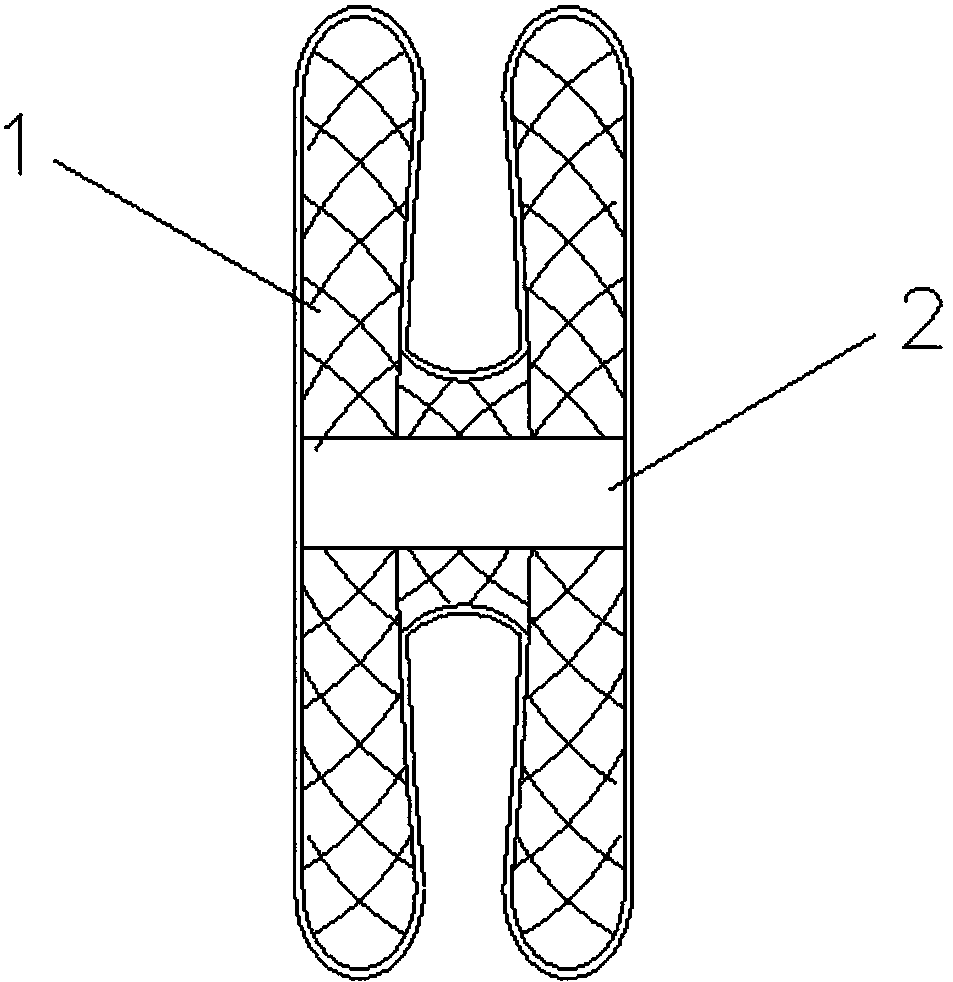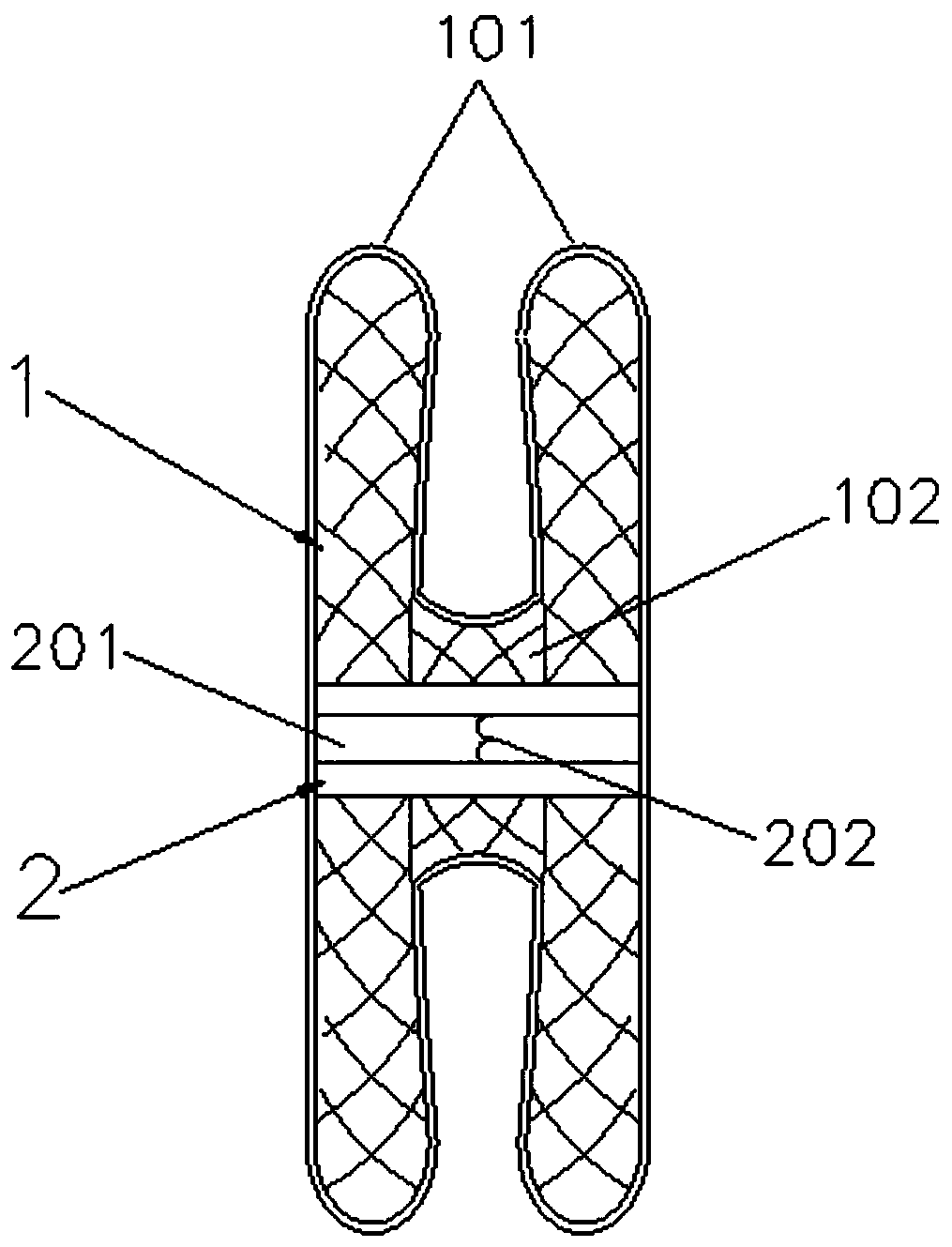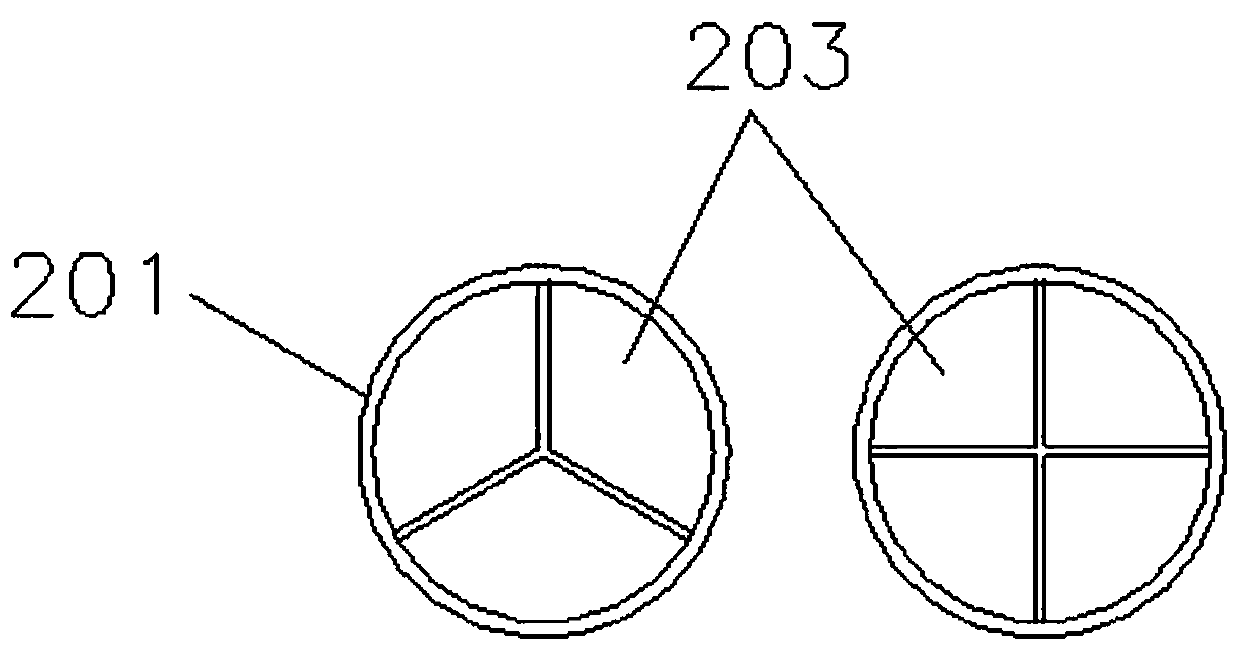Occlusion device used for alleviating pulmonary arterial hypertension of congenital heart disease
A technology for congenital heart disease and pulmonary hypertension, applied in the field of medical devices, can solve problems such as ineffective relief of pulmonary hypertension, achieve the effect of alleviating atrial septal defect, eliminating volume overload and pressure conduction, and avoiding severe right heart failure
- Summary
- Abstract
- Description
- Claims
- Application Information
AI Technical Summary
Problems solved by technology
Method used
Image
Examples
Embodiment 1
[0043] An atrial septal defect occluder for relieving pulmonary hypertension, comprising an occluding part 1 and a shunt part 2, the shunt part 2 is embedded in the axial center of the occluding part 1 and runs through the occluding part 1, and the part of the occluding part 1 The main body is a mesh structure, and the periphery is coated with a layer of polymer elastic film, and the shunt part 2 is installed in the axial direction with a one-way valve 202 for one-way conduction and conduction;
[0044] The blocking part 1 includes blocking disks 101 at both ends and a waist portion 102 connected in the middle, and the specifications of the blocking disks 102 at both ends are the same or different.
[0045] Based on the above-mentioned atrial septal defect occluder for relieving pulmonary hypertension;
[0046] The system-pulmonary artery shunt can be adjusted to make a large defect into a smaller defect, reducing the system-pulmonary shunt and reducing the capacity overload o...
Embodiment 2
[0048] A ventricular septal defect occluder for relieving pulmonary hypertension, comprising an occluding part 1 and a shunt part 2, the shunt part 2 is embedded in the axial center of the occluding part 1 and runs through the occluding part 1, and the part of the occluding part 1 The main body is a mesh structure, and the periphery is coated with a layer of polymer elastic film, and the shunt part 2 is installed in the axial direction with a one-way valve 202 for one-way conduction and conduction;
[0049] The blocking part 1 includes blocking disks 101 at both ends and a waist 102 connected in the middle.
[0050] After installation, it can effectively alleviate the pulmonary hypertension caused by congenital heart disease ventricular septal defect; after the occluder is installed, it forms a one-way channel that prevents left-to-right shunt and only allows right-to-left shunt, which is convenient for eliminating the volume overload of pulmonary vessels and Pressure conducti...
Embodiment 3
[0052] A patent ductus arteriosus occluder for relieving pulmonary hypertension, comprising an occluding part 1 and a shunt part 2, the shunt part 2 is embedded in the axial center of the occluding part 1 and runs through the occluding part 1, and the occluding part 1 The main body of the shunt is a mesh structure, and the periphery is coated with a layer of polymer elastic film, and the shunt part 2 is installed in the axial direction with a one-way valve 202 for one-way conduction and conduction;
[0053] The blocking part includes blocking disks at two ends and a waist connected in the middle, and the blocking disk is located on one side of the waist, which is a single-side blocking disk structure.
[0054] After installation, it can effectively relieve the pulmonary hypertension caused by patent ductus arteriosus of congenital heart disease; after the occluder is installed, a one-way channel that prevents left-to-right shunt and only allows right-to-left shunt is formed, wh...
PUM
 Login to View More
Login to View More Abstract
Description
Claims
Application Information
 Login to View More
Login to View More - R&D
- Intellectual Property
- Life Sciences
- Materials
- Tech Scout
- Unparalleled Data Quality
- Higher Quality Content
- 60% Fewer Hallucinations
Browse by: Latest US Patents, China's latest patents, Technical Efficacy Thesaurus, Application Domain, Technology Topic, Popular Technical Reports.
© 2025 PatSnap. All rights reserved.Legal|Privacy policy|Modern Slavery Act Transparency Statement|Sitemap|About US| Contact US: help@patsnap.com



